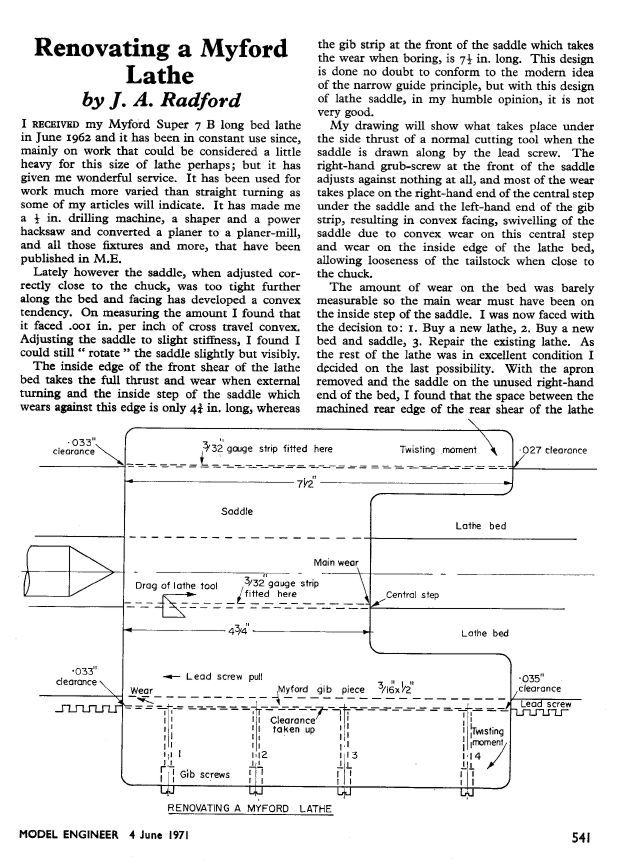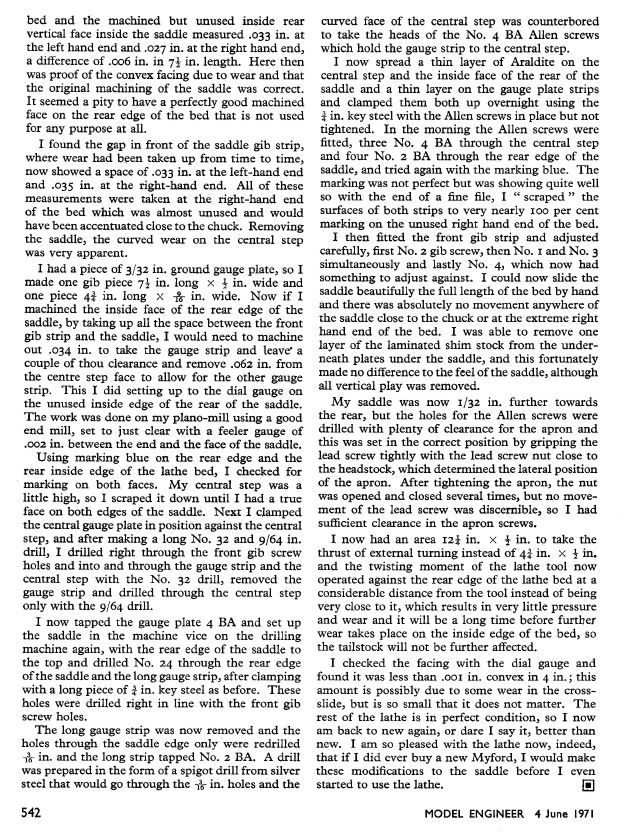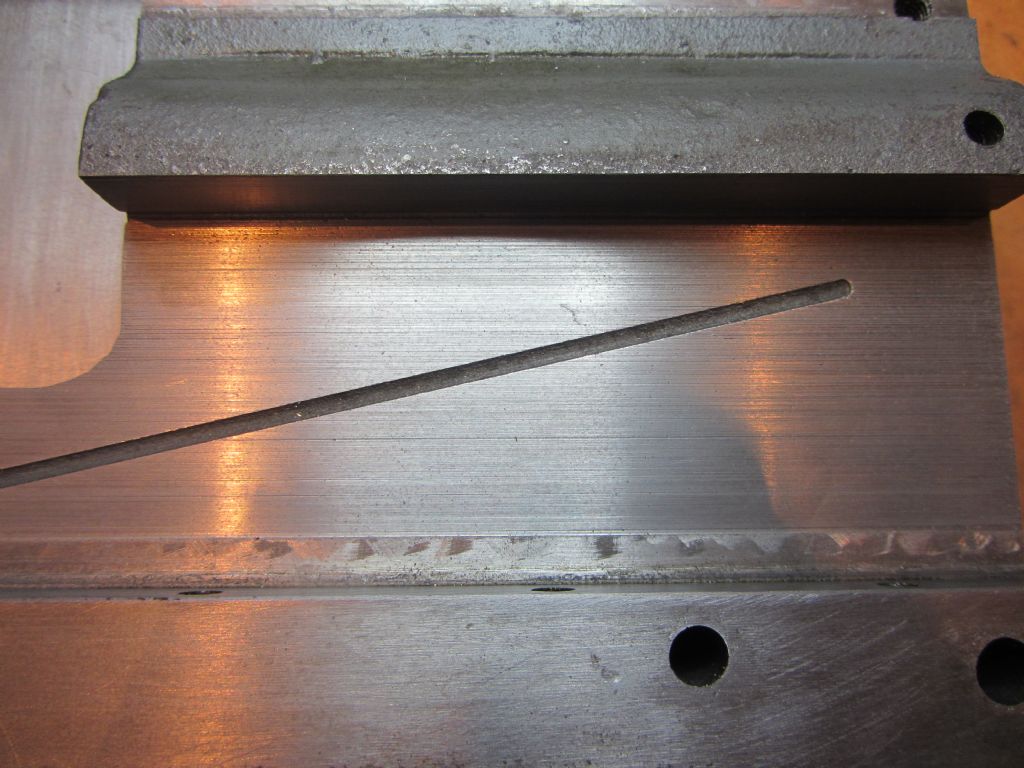Morning Brian,
I don't know about different materials and wear – others more qualified may wish to comment.
However, the 1mm shim you propose should give you about 0.005 inch (there – mixed dimensions again!) clearance for the narrow guide face based on an average of the rear clearance measurements you obtained of 31 / 39 thou.
When you refit the apron you will hopefully have sufficient waddle room in the cap-screws to get the rack gearing and half nuts aligned. When I refitted the saddle I moved the apron as near the tail-stock as possible, engaged the half-nuts, made sure the apron was not skewed by reference to the mating edges of saddle and apron and tightened up the saddle. Moving the saddle back to the chuck end and reengaging the half-nuts did not show any significant movement of the lead-screw indicating that the apron was (most likely) aligned OK.
What this mod does is to move the saddle away from the operator restoring it to the designed position. With wear and adjustment, the saddle is slowing moving towards the operator and twisting. The important thing is not to introduce too thick a shim which will over compensate for the wear.
I'm no expert, this is all from the experience of making a simple mod to restore accuracy to a narrow-guide Super 7 or ML7 for that matter.
As I indicated in an earlier post my initial experiment was to test the feasibility of using Turcite with no machining. The 0.5mm temporary shim is still in place and working well, I bent a small lip at the tail-stock end to help locate it. I thought about adding a fixing screw, but the shim has never moved.
Phil
Edited By CotswoldsPhil on 18/09/2015 11:55:40
Ajohnw.







